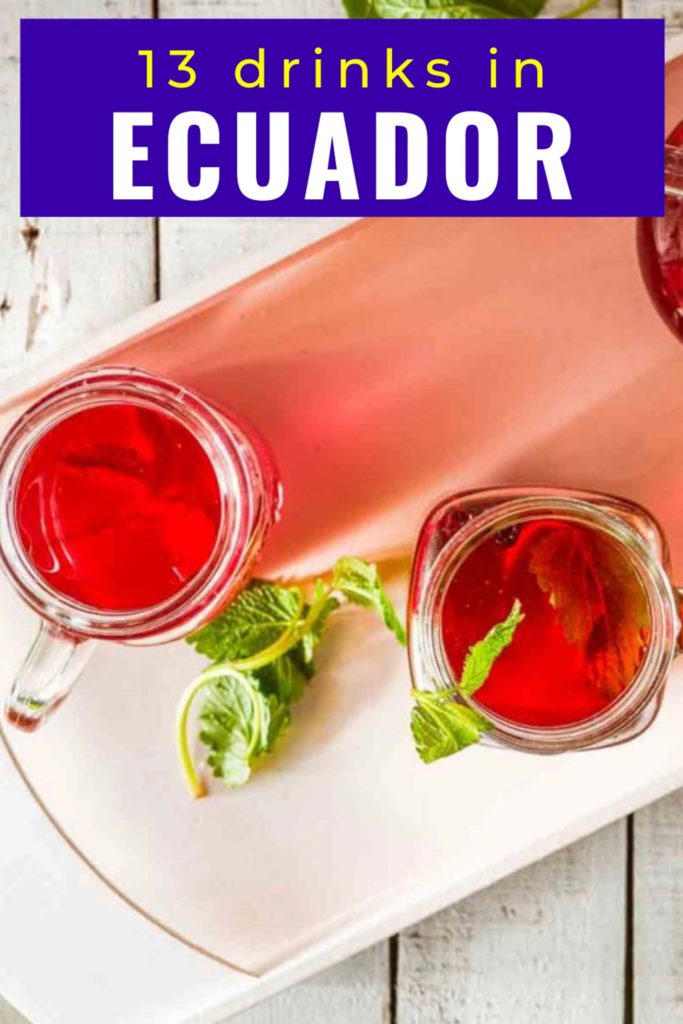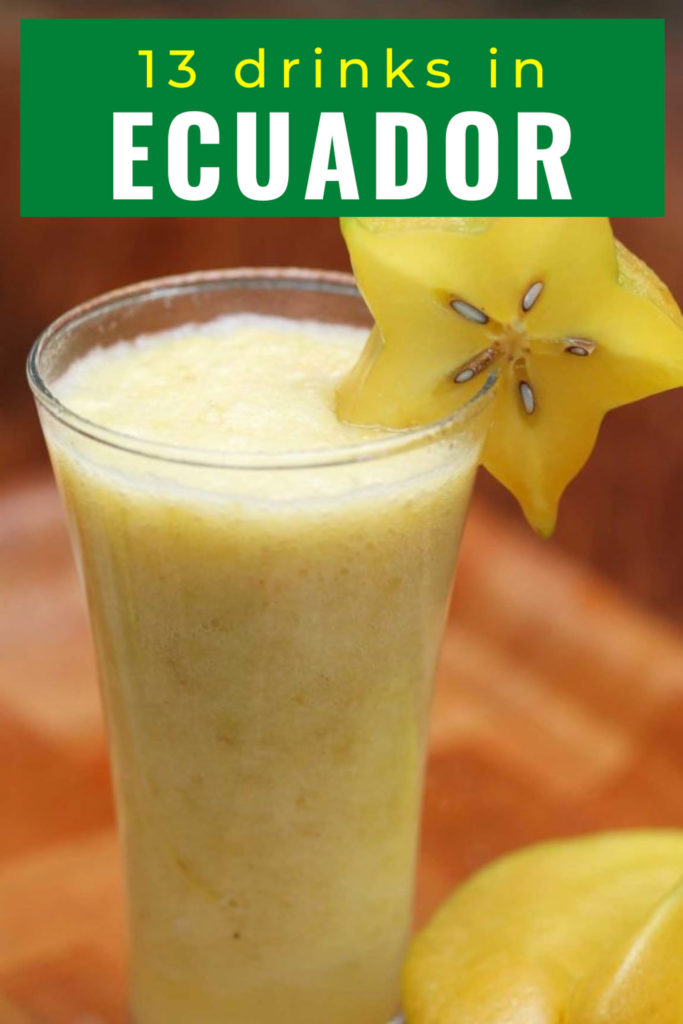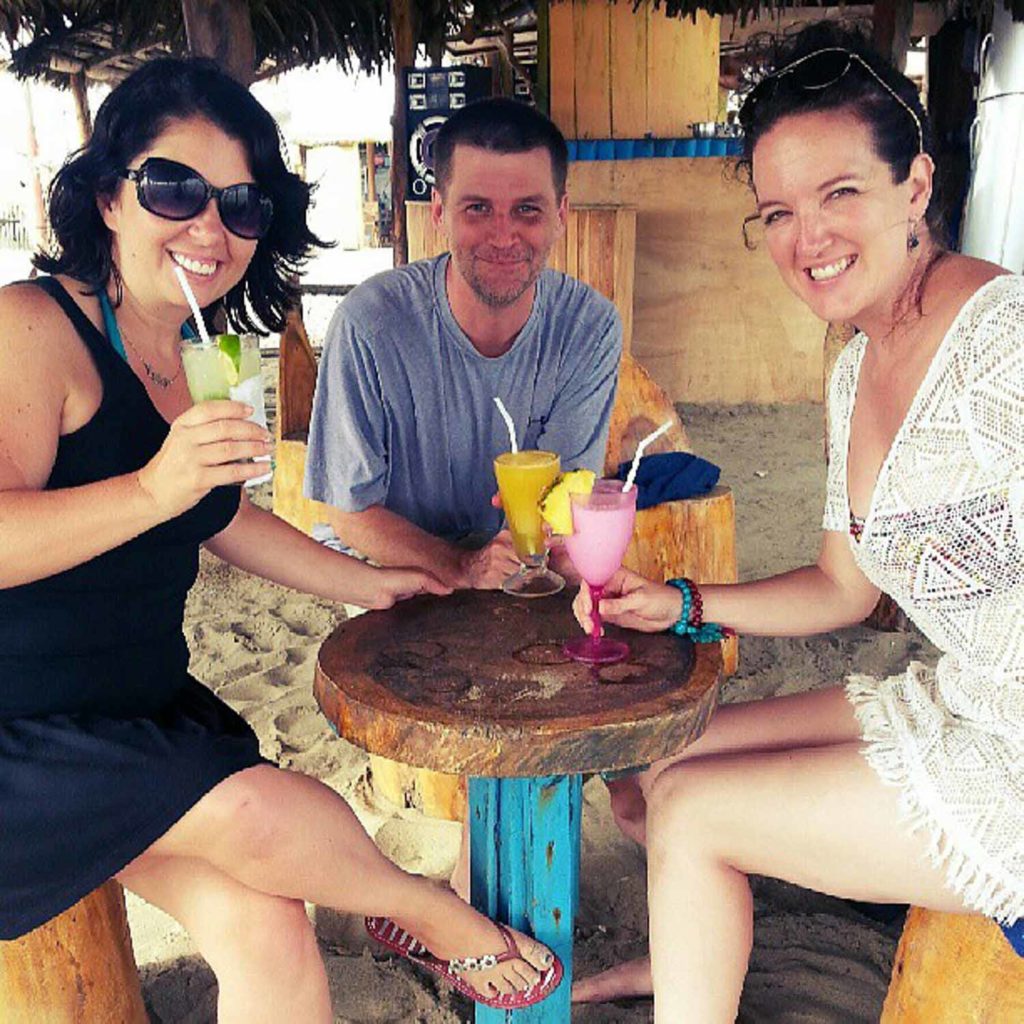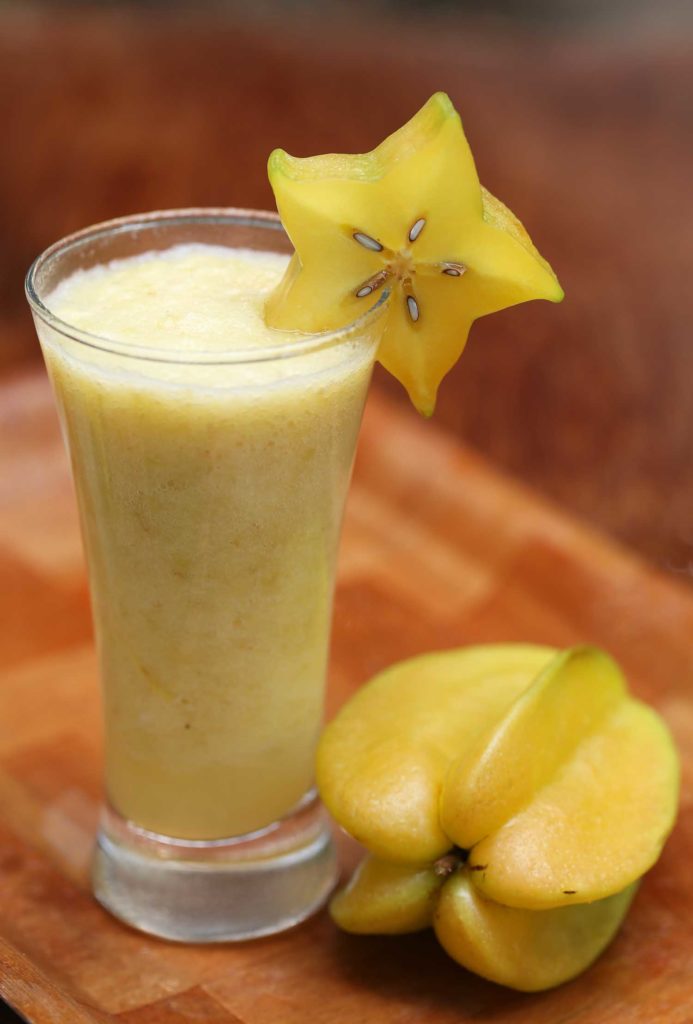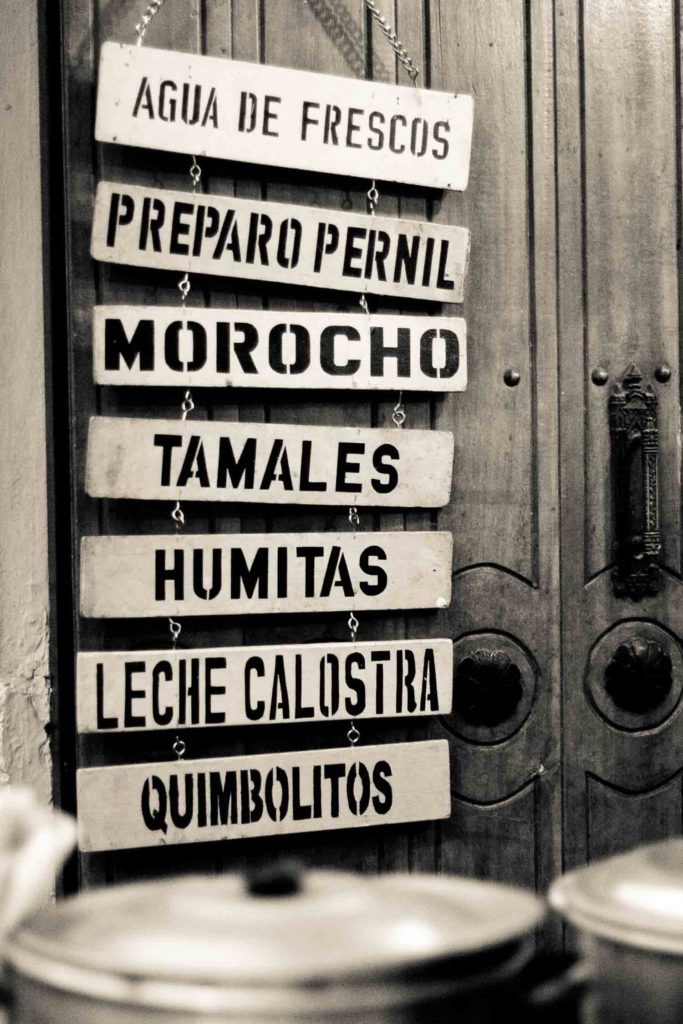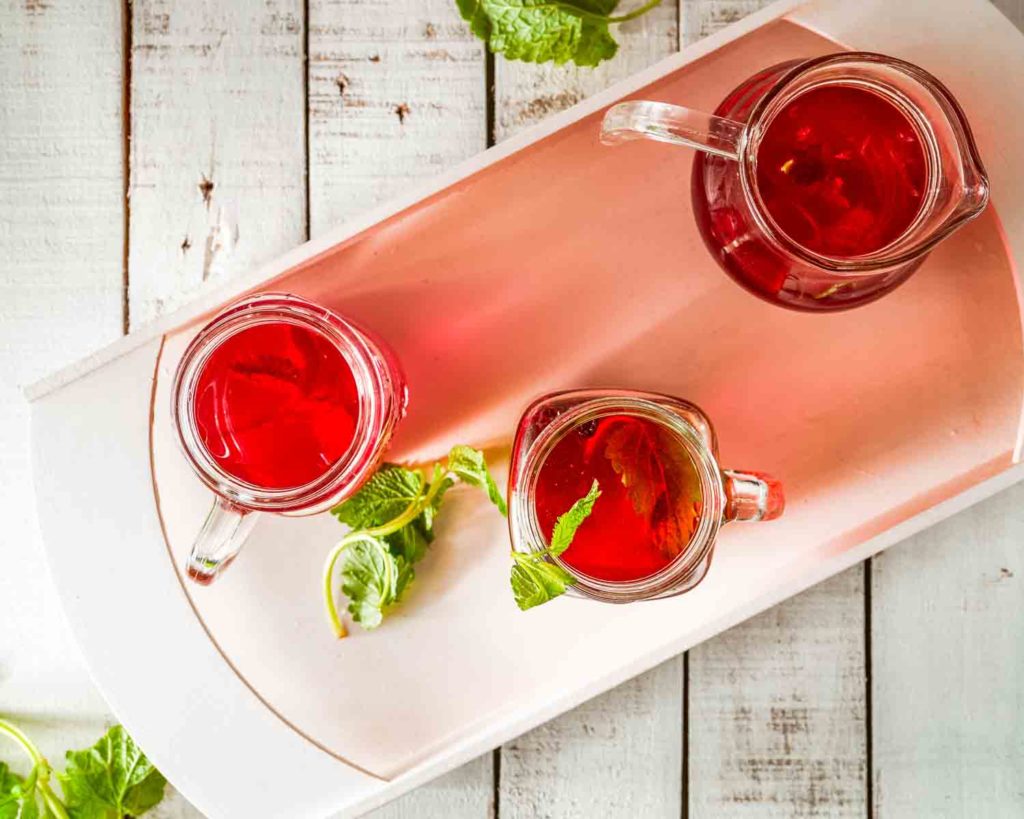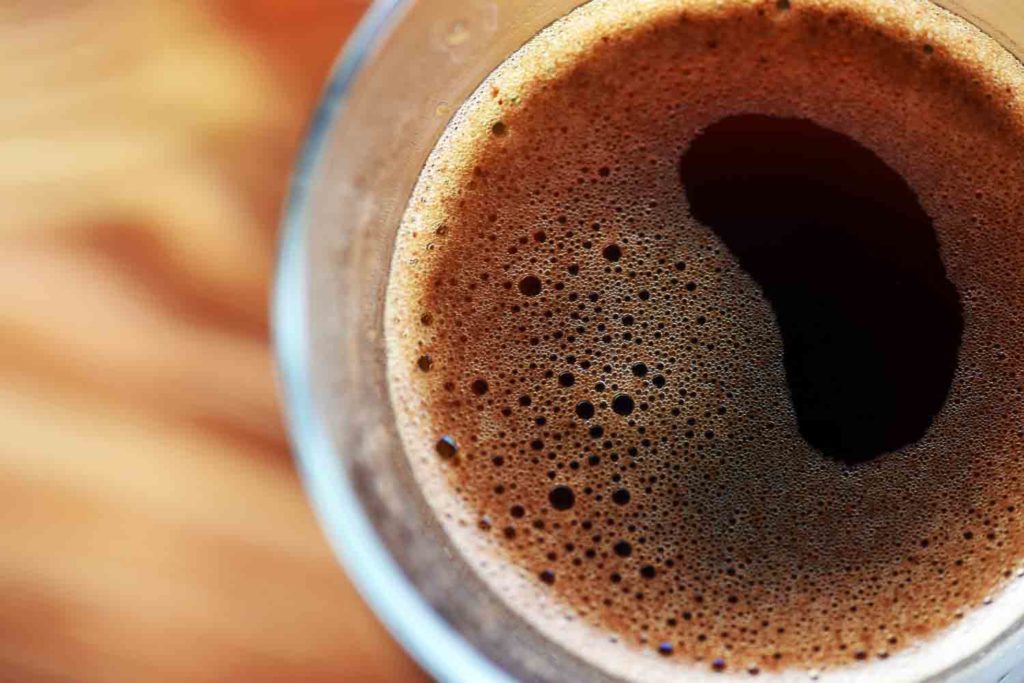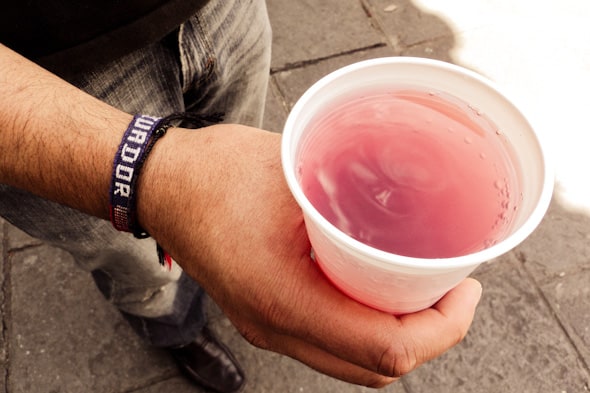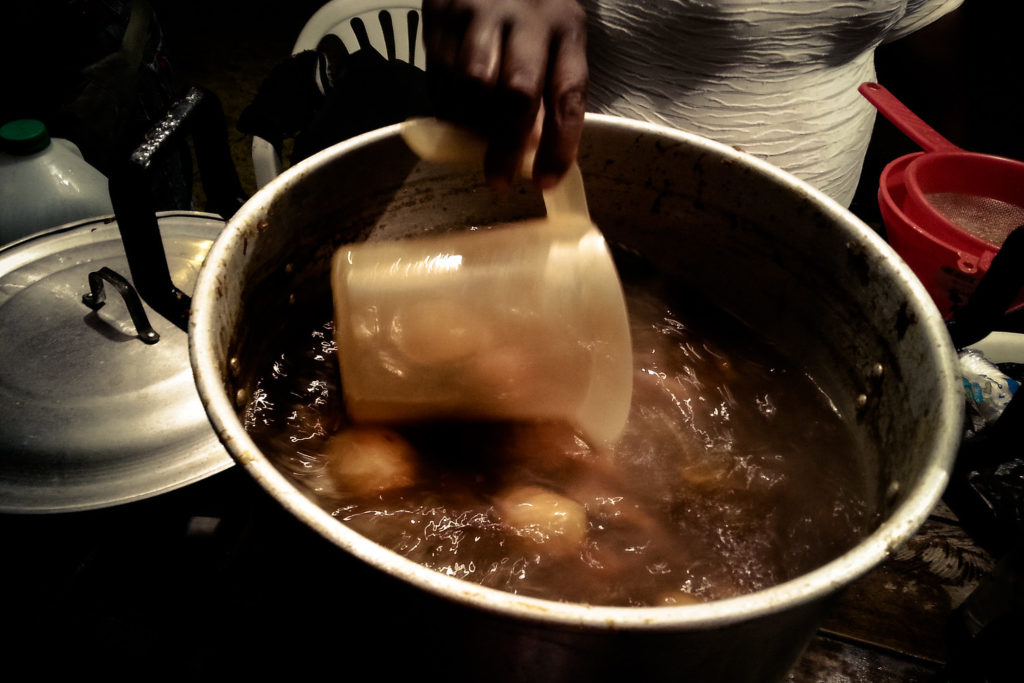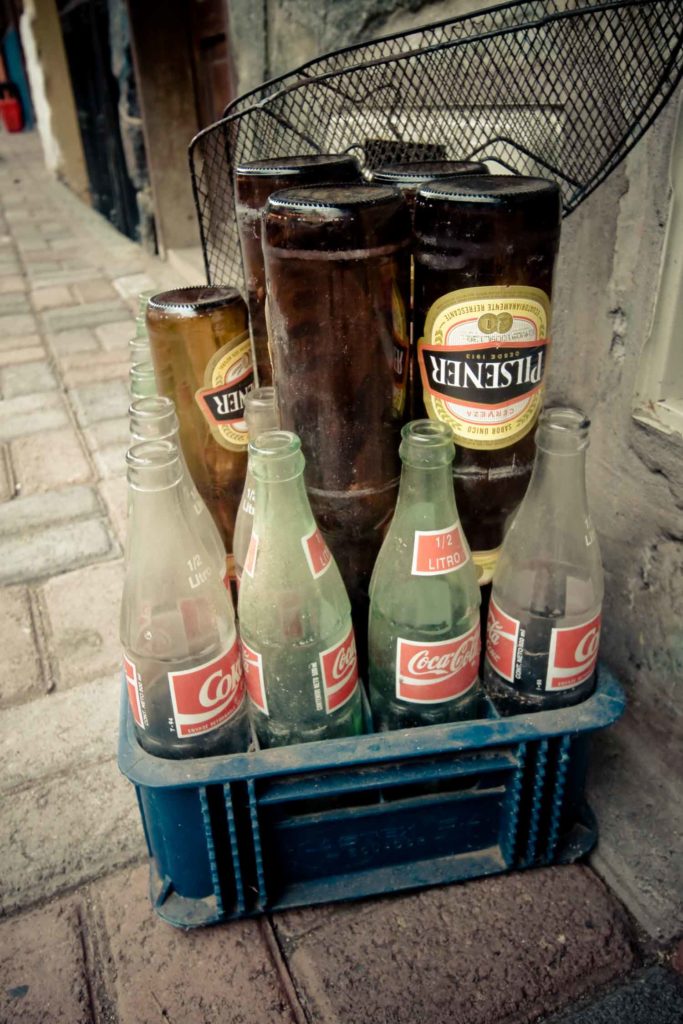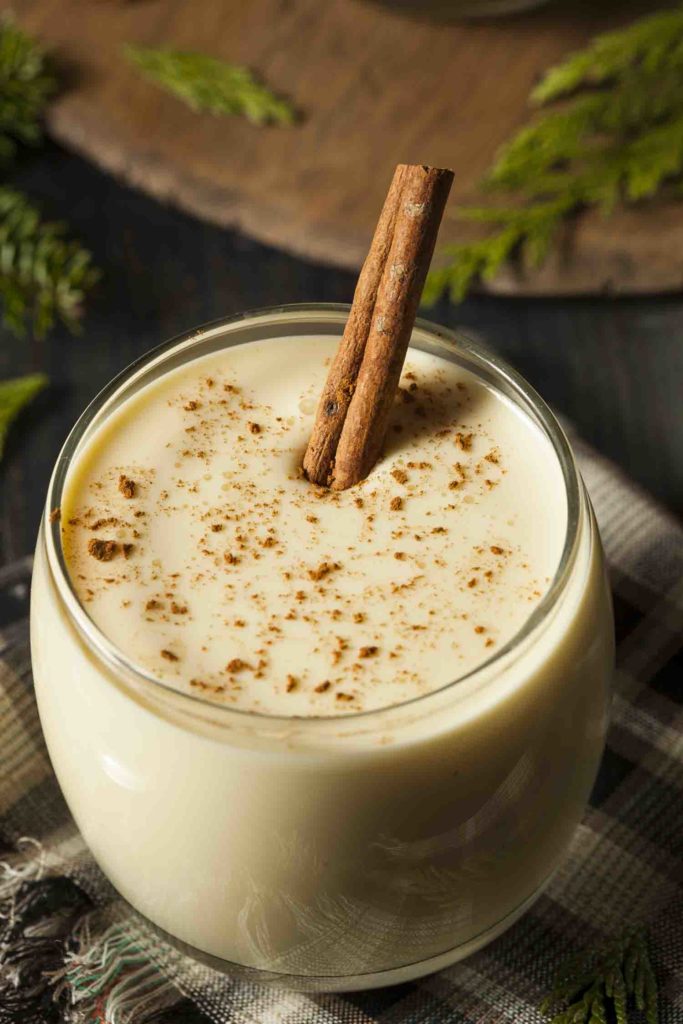My absolute favourite Ecuadorian drinks, both non-alcoholic and traditional cocktails with delicious aguardiente.
No one really talks about food and drink in Ecuador and that’s a shame.
While it doesn’t have the global reputation of food in Peru, that doesn’t mean you should skip the culinary exploration.
Ecuadorian food and drink is diverse because of it’s geography.
There is the coastal area where you’ll find Canoa, the Andes with Cuenca, the Amazon and of course the Galapagos.
Ecuador may be small but it is mighty.
And exploring Ecuadorian drinks is experience its culture. This is not the time to be sipping Cuban cocktails like mojitos or daiquiris.
Yes I love them too but there is a time and place.
And this is the time to try all the great drinks in Ecuador that are influenced by pre-Hispanic cultures.
Don’t worry I’ve also included some non-alcoholic drinks because if you drink all day you won’t remember what a great time you had in Ecuador.
Ecuadorian Drinks Non Alcoholic
Pinol
One of the most traditional drinks in Ecuador, pinol was invented by Rafael Emilio Madrid.
He saw laborers sucking on pieces of cane sugar aka panela.
It inspired him to grind it to mix with some spices, machica (toasted barley flour) and milk or water.
A similar Guatemalan drink called atol de pinol is made with corn.
Also called pinolillo, drinking pinol is a part of Ecuadorian culture and it is Ecuador’s national drink.
People make it at home and you can also buy pinol in coffee shops and ice cream parlors in Salcedo where the drink originated.
Pinol may also refer to the dry mix itself, which is used in making fruit smoothies.
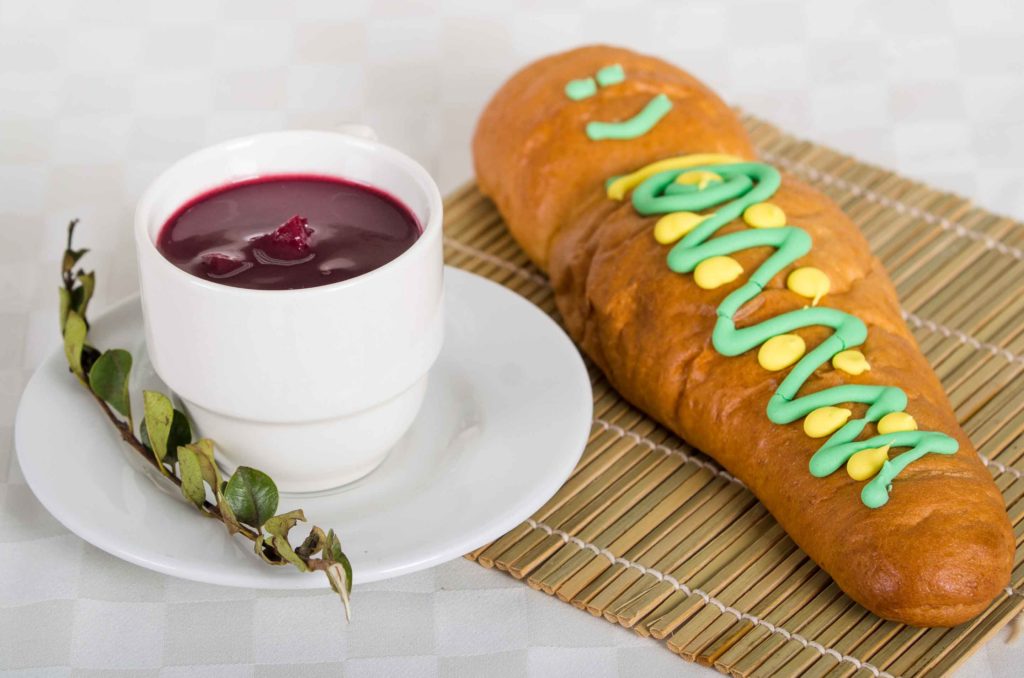
Colada Morada
One of the most traditional Ecuadorian drinks, colada morada is most often associated with Ecuadorian traditions, especially during the day of the dead.
Originally from the Andes, this spiced fruit and berry drink has a rich purple color because it’s made with purple or black Ecuadorian corn.
Mora or blackberries, blueberries, strawberry, mortino or Andean blueberry, naranjilla and pineapples are added to this drink.
You’ll also often find panela, cinnamon, allspice, lemongrass, cloves and orange peel.
Colada morada is traditionally prepared with guagua de pan on All Souls’ Day when Ecuadorians go to the cemetery to share this meal with their deceased loved ones to honor them.
A bit different from the chicha morada drink in Peru, this is a thick drink. Both are from pre-Hispanic times.
Colada morada is a thick, purple-colored drink originating from Ecuador. Its origin dates back to pre-Hispanic times.
And if you go to Cuenca Ecuador during Dia de los Muertos you’ll find people selling the drink and sweet bread on the streets.
That’s how I discovered it!
Fruit Juices
People in Ecuador love to drink natural fruit juices and milkshakes or jugos y batidos.
They make them using every fruit available in the region including naranjilla, guava, pricky pear, papaya, pineapple, maracuya and tomate de arbol.
Locals usually boil these fruits with sugar and water to bring out their natural flavors before they are consumed as is or turned into smoothies.
Some also add milk to make these juices creamier, these are called batidos. If you don’t want milk make sure you ask for jugo (pronounced who-go).;
Morocho
This spiced Ecuadorian drink is made from cracked corn, cinnamon, sugar, raisins and milk.
It is a drink and dessert in one…depending on who makes it.
Also called spiced corn pudding, morocho has the thick consistency of a drink similar to a milkshake.
Sometimes it’s so thick you need a spoon to enjoy it.
Ecuadorians especially love drinking morocho during the cooler months where it’s considered the ultimate comfort food.
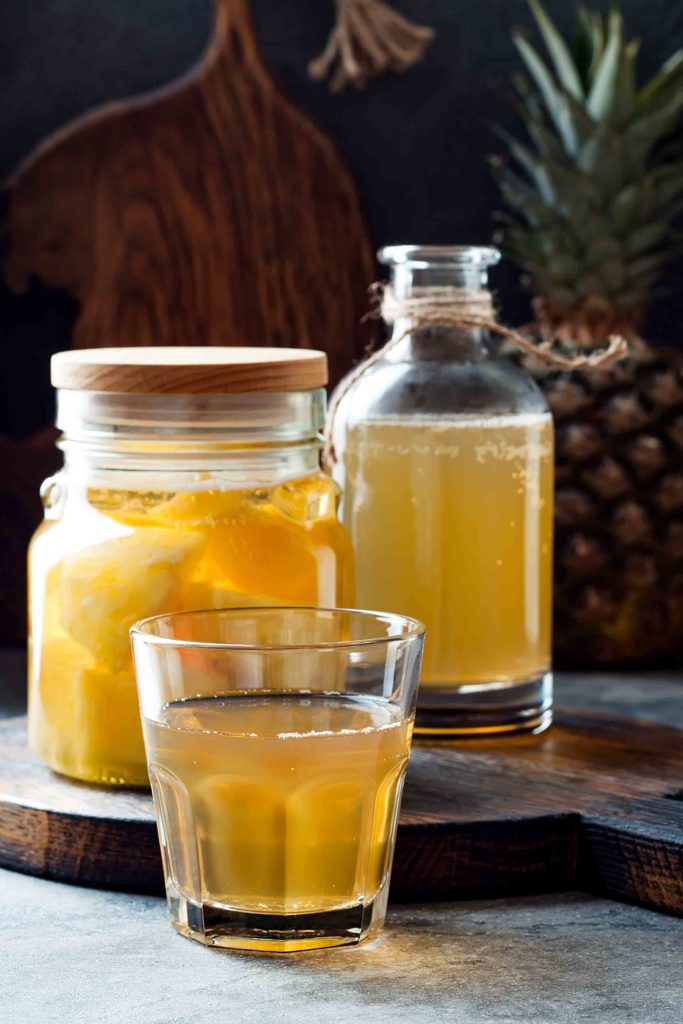
Chicha de Piña
Ecuadorians traditionally boil fruits with sugar and spices to make juice.
Chicha de piña is essentially a pineapple drink made by boiling pineapple rinds in water with anise, allspice, cinnamon sticks, cloves and sugar.
It reminds me of tepache, one of my favourite drinks in Mexico. However, tepache is fermented to a low alcohol level of 2%.
Chicha de piña is also a very popular drink in Honduras.
Once it cools down, this drink accompanies meals or snacks.
But many Ecuadorians love drinking chicha de piña during summer because of its refreshing and vibrant taste.
Horchata Tea
One of the best ways for Ecuadorians to stay healthy is by drinking their favorite cup of tea, horchata.
Originating in the Loja province, horchata tea contains the most number of medicinal plants used in a single drink at 71.
It is also believed to have at least 32 therapeutic uses.
The drink concoction includes 28 kinds of herbs and flowers including fuschsias, chamomile and rose geraniums.
It also contains lemon juice and panela (brown sugar) is traditionally used as its sweetener.
Ecuadorians enjoy this pink tea drink hot or cold. Some have several cups of horchata throughout the day.
Ecuadorian Coffee
It’s no secret that Ecuador produces some of the best coffees in the world.
In fact, it is one of only 15 countries that grows and exports the famous robusta and arabica coffees. This is widely consumed around the world for their intense and rich flavors.
The history of coffee production in Ecuador started in the 19th century.
The first coffee plantations were established in the country because of its biologically diverse ecosystem that’s perfect for growing coffee.
Today, Ecuador produces some of the most complex coffee beans that are enjoyed not only by locals but also by coffee lovers from around the world.
Experts say that Ecuadorian coffee has a unique taste because the beans are grown in a nutrient-rich soil where the wildlife can naturally fertilize the crops.
Ecuador also produces local crops like bananas and cacao that add more flavor into its coffee beans.
Colada de Avena
Locals call it colada de avena con naranjilla, refresco de avena or just Quaker after the famous oatmeal brand.
That’s because colada de avena is basically an oatmeal drink for breakfast in Ecuador or as a snack beverage after school or work.
Although it already has several versions, the original recipe for colada de avena includes oats, panela, cinnamon, water and a local fruit called naranjilla.
Some people also use fruits like passion fruit, mountain papaya or pineapple.
Colada de avena has a very refreshing taste and it’s also very healthy with the combination of fruit and oat in it.
Aguas de Remedio
True to its name, Aguas de Remedio is a natural tea infusion made by locals to cleanse the body and treat pain and other common ailments.
It is common to drink these healing drinks such as agua de pitimas made by nuns.
This concoction is usually made using different kind of herbs that are found in Ecuador.
It may include:
- valerian, which is good for the nervous system
- chancapiedra for the kidneys
- matico for skin disease and infections
- chamomile for stomach pain
- plantain for wounds and inflammation and
- lemon verbena to help with sleep.
Ecuadorian Alcoholic Drinks
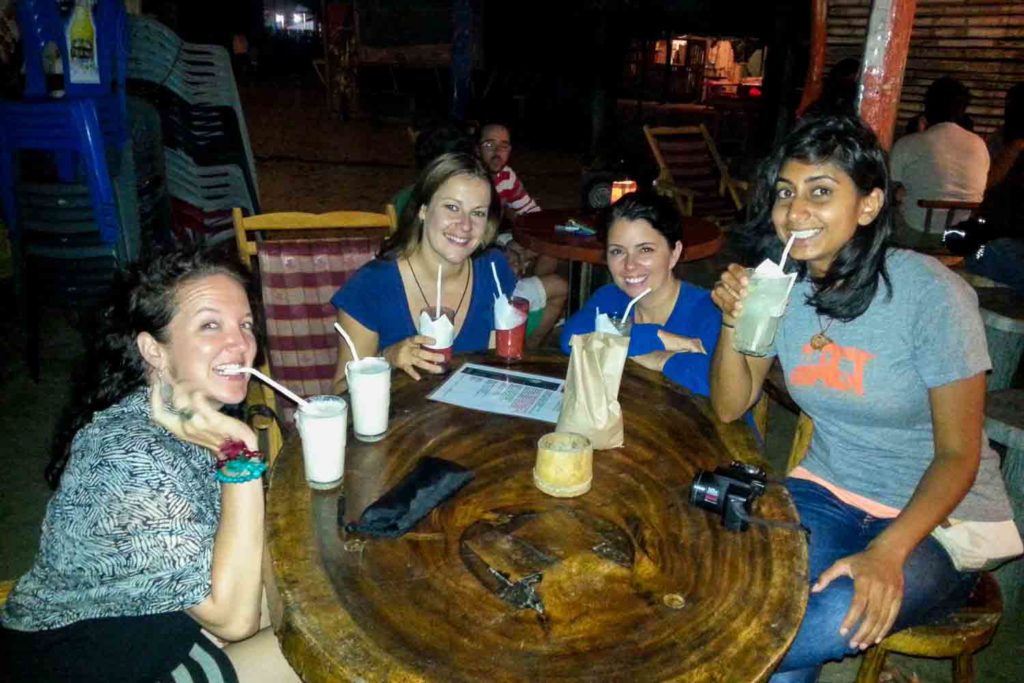
Mistela
Originally a Spanish drink, mistela is a cocktail that’s traditionally infused with coffee, cinnamon, orange peel and clove, and added with aguardiente, which is considered the domestic alcohol of Ecuador.
Although you can find mistela anywhere in the country, the best concoctions can be found in Quito at Quesadillas de San Juan or La Cruz Verde.
Ecuadorians usually drink Mistela after lunch to finish a good meal.
Canelazo
Also called cinnamon spiced rum, canelazo is a must-try cocktail drink when you’re in Ecuador.
This warm alcoholic beverage is traditionally served in family gatherings or parties, especially on cold nights.
Canelazo’s primary ingredient is the locally made aguardiente and it is mixed with water, panela, cloves, cinnamon, orange juice, lime and anise.
The drink got its name from the Spanish word canela, which means cinnamon. You will instantly taste that strong hint of cinnamon on your first sip.
The alcohol content of canelazo depends on how much aguardiente is put into the mix.
You have to be careful not to get drunk when you just want to enjoy a nice cinnamon drink. I have made this mistake more than once during Ecuadorian festivals in the Andes when it gets cool at night.
Some locals also make non-alcoholic versions of canelazo for the children to enjoy.
It’s also one of the most popular Peruvian drinks.
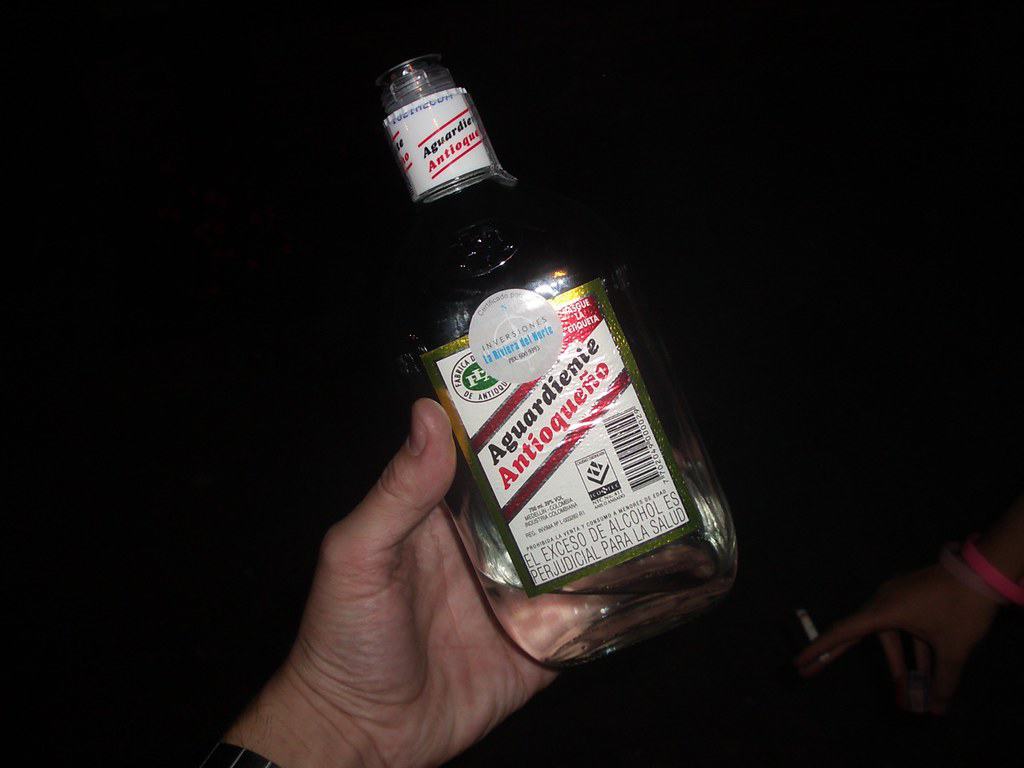
Aguardiente
Aguardiente is the national drink of Colombia. However, it is also enjoyed a lot in Ecuador and other South American countries like Brazil, Chile, Mexico.
You’ll also find it in Central America, where it is in many Costa Rican drinks and known as guaro.
What makes the aguardiente in Ecuador different from that of Colombia is that it is usually left unflavored.
The Ecuadorian liquor is also made from local cane sugar and contains 29-60% of alcohol by volume.
Aguardiente is similar to tequila, which is taken as shots or mixed with fruit juices and cinnamon to make canelazo, which is a favorite Ecuadorian cocktail.
Since it is not aged, aguardiente cannot be considered rum.
But if it is placed inside a wooden barrel for a couple of years, then it becomes proper rum.
Zhumir is Ecuador’s most popular commercial brand of aguadiente.
You can get it straight or also in flavours like lime, maracuya and other Ecuadorian fruit.
Ecuadorian Beer
As much as Ecuadorians love their aguardiente, they are also very much into drinking beer.
Pilsener is the national beer of Ecuador. It is anobvious favorite in the country with its advertisements seen everywhere.
It’s even a sponsor of a major soccer team.
In fact, Ecuador is only one of a few countries in South America with a mostly monopolized beer market. Pilsener is consumed almost like water on a daily basis.
Made by Cerveceria Nacional Ecuador, Pilsener tastes like a light lager beer with its sweet flavor profile, although some think it’s grainy.
Another crowd favorite is Club Premium that comes in a green bottle and is not quite as grainy as Pilsener.
Of course, there’s the growing trend of Roja or amber beers in South America that are a bit darker than your typical beer and more satisfying than Pilsener or Club Premium.
Rompope
If you love a good eggnog drink during Christmas, then you’ll surely love its South America version called rompope.
This Ecuadorian Christmas drink is a take on the classic eggnog drink or Cuban crema de vie. It is made with milk, egg yolks, condensed milk, sugar, vanilla, orange peel, cream and aguardiente.
Rompope is usually enjoyed by Ecuadorians during Christmas. It is also called ponche de leche in some regions of the country.
Just be careful when drinking this seemingly innocent cocktail because it can easily make you drunk with its aguardiente content.
Pin it: Drinks in Ecuador
